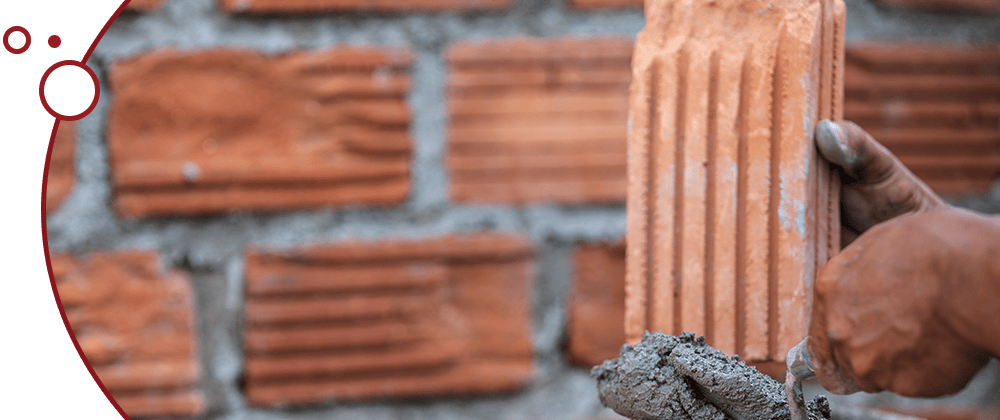
Table of Contents
What is a Tuckpointing Estimate?
Tuckpointing, an essential maintenance task for brick structures, involves the careful repair and replacement of mortar. It plays a vital role in preserving both the appearance and structural integrity of brick buildings. A tuckpointing estimate provides a detailed assessment of the cost and scope of work required for a tuckpointing project. This guide aims to demystify tuckpointing estimates, helping you understand what to expect and how to make informed decisions when seeking tuckpointing services for your property.
Understanding Tuckpointing: The Basics
What is Tuckpointing?
Tuckpointing is a specialized masonry technique used to enhance the structural stability and visual appeal of brickwork. It involves removing old, deteriorating mortar from between bricks and replacing it with new mortar. This process not only improves the aesthetic appearance of the brickwork but also strengthens it, preventing water ingress and other structural issues.
Why Tuckpointing is Essential
Regular tuckpointing is crucial for the longevity and durability of brick structures. It acts as a preventive measure, safeguarding against the deterioration of mortar caused by environmental factors like weathering and erosion. Tuckpointing helps in maintaining the structural integrity of the brickwork, thereby avoiding potentially costly repairs in the future.
The Tuckpointing Estimate Process
Initial Inspection
The first step in obtaining a tuckpointing estimate is a thorough inspection conducted by professionals. During this inspection, specialists evaluate the condition of the mortar and bricks, identifying areas that require repair. They assess the extent of damage, considering factors like the age of the building, the quality of existing mortar, and environmental exposure.
Estimate Factors
The cost of a tuckpointing project is influenced by several key factors:
- Extent of Damage: More extensive damage requires more materials and labor, increasing the cost.
- Size of the Area: Larger areas needing tuckpointing will naturally incur higher costs.
- Type of Bricks and Mortar: Different materials may have varying costs and availability.
- Accessibility of the Work Site: Difficult-to-reach areas might require special equipment or techniques, affecting the price.
- Regional Labor Costs: Labor rates can vary significantly depending on the region.
Costs Involved in Tuckpointing
Average Pricing
Tuckpointing costs can vary widely based on the aforementioned factors. Generally, homeowners can expect to pay between a certain range per square foot, which includes both labor and materials. It’s important to get a detailed breakdown of these costs in your estimate.
Material Costs
The choice of materials significantly influences the overall estimate. High-quality mortar and sealants, while potentially more expensive, can offer better durability and longevity, potentially reducing long-term costs.
Choosing a Tuckpointing Service
Credentials and Experience
Selecting the right tuckpointing service is crucial. Look for providers with relevant licenses and a solid track record of experience. Check their portfolio of completed projects to gauge their expertise and quality of work.
Comparing Estimates
It’s advisable to obtain multiple estimates to compare services and pricing. This comparison helps in ensuring that you receive a comprehensive and fair quote for the required tuckpointing work.
Maintenance and Aftercare
Post-Tuckpointing Care
After tuckpointing, proper maintenance is key to extending the lifespan of the mortar and brickwork. This includes regular cleaning and avoiding the use of harsh chemicals that could deteriorate the mortar.
Routine Inspections
Regular inspections help in early detection of wear and tear, preventing extensive damage. These inspections should be part of your ongoing property maintenance plan to ensure the longevity of your brickwork.
Conclusion
Tuckpointing is an invaluable process for maintaining the integrity and appearance of brick structures. Understanding the nuances of a tuckpointing estimate is crucial for any property owner. It not only prepares you for the financial aspects of the project but also helps in selecting the right professionals for the job. By being informed about the factors that affect tuckpointing costs and knowing how to care for your property post-tuckpointing, you can ensure the longevity and durability of your brickwork. Remember, tuckpointing is an investment in your property’s future, safeguarding it against structural issues and enhancing its overall value.
FAQs about Tuckpointing Estimates
Q1: How frequently should tuckpointing be done?
A1: Tuckpointing frequency depends on various factors, including the age of the building, climate, and previous maintenance quality. Generally, it’s recommended every 20-30 years, but an inspection can provide a more accurate timeline.
Q2: Can I perform tuckpointing myself, or should I hire a professional?
A2: While DIY tuckpointing is possible, it requires skill, proper tools, and an understanding of masonry techniques. For most people, hiring a professional ensures the job is done safely and effectively, guaranteeing the longevity of the work.
Q3: What is the lifespan of a tuckpointing job?
A3: A professional tuckpointing job can last several decades. The exact lifespan depends on environmental conditions, the quality of materials used, and the skill of the workmanship.
Q4: How much does tuckpointing typically cost?
A4: The cost varies based on the extent of damage, the area’s size, material types, site accessibility, and regional labor costs. It’s best to get a detailed estimate from a professional for accurate pricing.
Q5: What are the signs that my property needs tuckpointing?
A5: Indicators that your property may need tuckpointing include deteriorating mortar, visible cracks, loose bricks, and internal signs of moisture damage. Regular inspections can help identify these issues early.


